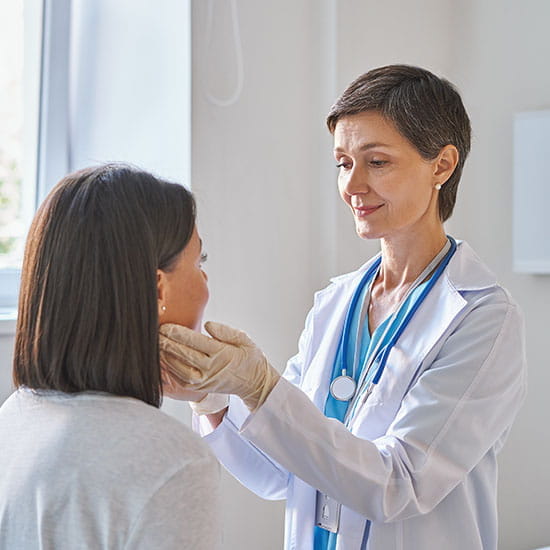- Advanced Practice Pulse
- Posts
- (AR)e You Seeing This?
(AR)e You Seeing This?
Preventative Care Stays, Policies are Changing, and Interview with Dr. Patel Propels APPs Into the Future!

Credit: Giphy
In Today’s Edition:
Mergers are Happening Across the US…Are You Getting a New Badge?
Vizient Clinical Team Realizes the Value that APPs (PAs, NPs) add to Modern Healthcare. (We Already Knew)
The Stay Stands! The DOJ Squashes an Attempt to Halt Preventive Care
USPSTF Changes Breast Screening Recommendations
Lung Cancer is a Rising Threat to Nonsmoking Asian American Females
United Healthcare Policy Changes
Meet Our Inspiration for the Week, Dr. Patel! She’s a wealth of knowledge as the Vice Chair for Innovation. Beam Us UP!
🩺 APP Trending News

Credit: Giphy
APP’s are Here to Stay
If you aren’t familiar with Vizient, they are a massive healthcare consulting firm utilized by many large hospital systems. Basically they put some science behind all things operations, strategic growth, and quality (to name a few). This article highlights the value APPs (PAs, NPs) bring to the healthcare workforce. If you have been practicing in large systems for a while…much of this “newfound knowledge” won’t be a surprise. It’s worth the read. It may help you with that next salary negotiation or employee retention plan.💡
Mergers are Happening Across the US…Are You Getting a New Badge?
This article highlights just one merger affecting multiple hospital systems across the Midwest. This is not an isolated incidence. As large systems merge and takeover communities, the competition disappears. This is is only an opinion, but without competition, are patients at risk? Standardization is a good thing, at times, but we wonder where the antitrust regulators are? This impacts all of us folks, we will continue to echo the importance of joining your national and local professional organizations as advocates in this ever changing landscape! 🙏🙌
⚙️ The More You Know

Credit: Giphy
The Stay Stands! The DOJ Squashes an Attempt to Halt Preventive Care
In our edition, Prevention is Preferable to Cure (released April 25), we shared concerning information about U.S. District Judge Reed O’Connor’s ongoing attempts to halt preventative care and wellness services mandated by the Affordable Care Act. We followed up and it appears that the Department of Justice (DOJ) has squashed the move to keep people from preventative care... for now. Why should we be abreast on this news? Because advocacy is everything. Preventative care is essential for the wellbeing of our patients and early detection saves lives. Case in point? More aggressive colon cancer and breast cancer are on the rise in younger people and our national organizations are finally recognizing the benefits of screening. So why is this judge so set creating barriers to prevention during a movement focused on improving healthcare equity.🙄
USPSTF Changes Breast Screening Recommendations
The United States Preventive Services Task Force (USPSTF) recently released draft recommendations for breast cancer screening after evaluating an updated systematic review and a modeling study. Although the manuscript is not yet published, it remains open for public comment until today! The new guidelines suggest biennial (every two years) screening mammography for women aged 40 to 74 who are at average risk of breast cancer. These recommendations differ from previous guidelines and from recommendations by other organizations such as the American Cancer Society and the National Comprehensive Cancer Network. The conflicting guidelines have caused confusion among patients and healthcare providers, and the new USPSTF recommendations are unlikely to resolve the ongoing debate about the best breast cancer screening practices. That said, at least they are now more closely aligned with what our specialists an the ACOG have recommended all along. Even more encouraging is that they recognized the glaring disparities in outcomes for black women and the fact most studies lack any diversity in racial characteristics. Time will tell if the AAFP adopts these changes but they do have a nice article on the approach to shared decision making in the screening process as well as the overview provided below.
Lung Cancer Without Ever Smoking? A Rising Threat in Asian American Females
Author, Alice S. Y. Lee is an emergency physician who shares her personal experience of being diagnosed with lung cancer as a never-smoking Asian American female. The article highlights the little-known fact that a significant percentage of lung cancer cases in Asian American women occur in nonsmokers. The author states “10 to 20 percent of lung cancers in the U.S. are in non-smokers. But, oddly, if you break down these cases by sex and ethnicity, 57 percent of Asian American females with lung cancer are nonsmokers. Even more peculiar is that approximately 95 percent of Chinese American females with lung cancer are never smokers.” cancer is the leading cause of cancer-related deaths worldwide, and early detection is crucial. The author mentions ongoing studies, such as the New York Female Asian Nonsmoker Screening Study and the FANS Study, that aim to investigate and raise awareness about lung cancer in this population. The author emphasizes the importance of spreading awareness and encouraging early screening to prevent late-stage diagnoses. Dr. Lee also expresses gratitude for her own early detection and successful treatment.
United Healthcare Policy Changes
UnitedHealthcare has changed its approach to endoscopy services, including colonoscopies, by replacing the requirement for "prior authorizations" with an "advance notification" process. The new requirement involves healthcare providers collecting and submitting patient data to UnitedHealthcare before performing a procedure. The insurer's policy regarding colonoscopy procedures for routine screenings remains unchanged. Providers who comply with advance notification will be eligible for UnitedHealthcare's Gold Card program, which will eliminate prior authorization requirements for most procedures starting next year. The change aims to educate physicians and improve adherence to clinical best practices. The prior authorization plan had faced criticism from the medical community, concerned about potential delays and increased administrative burdens. Several medical groups had urged UnitedHealthcare not to implement the prior authorization program, highlighting its potential negative impact on patient access to care and physician burden. In response to the concerns raised, UnitedHealthcare met with some of these groups and proposed the "advance notification" process as an alternative, but the groups found the proposal poorly defined and complicated. They called for a pause in the implementation of the prior authorization policy to allow for further evaluation and discussions.
Free CME for the Week:
Pri-Med brings us a refresher on “modern cancer screening. Obtain 1.25h of FREE CME, refresh your knowledge with a pod-cast on your commute, and probably save a life. Win Win!
💡Inspiration for Aspirations
Meet Dr. Dipu Patel. She is an Educator, Consultant, Innovator, former Director of Clinical Pathways at a healthcare technology company and is paving the way for current and future clinicians as the Vice Chair for Innovation at the University of Pittsburgh. We had to pick her brain and inspire you with her remarkable journey and pioneering position as a PA!

Dipu Patel, DMS, MPAS, PA-C
Dipu Patel, DMSc, MPAS, PA-C is the vice chair for Innovation in the Department of Physician Assistant Studies at the University of Pittsburgh. She has clinical experience in emergency medicine, urgent care, and hematology/oncology, has served on several boards including the Physician Assistant Education Association, and continues to serve as chair of the Massachusetts Board of Registration for Physician Assistants. She has developed and taught a wide array of courses that speak to clinical diagnosis and reasoning, evidence-based medicine, health policy, physical exam and history taking, medical simulation, classroom technology, and professional development. Prior to joining the Department of PA Studies, she served as director of Clinical Pathways at a healthcare technology startup, where she led a team of global clinicians to assure that each clinical pathway is provider-driven and patient-centered. Incorporating clinical skills and knowledge with new technology that enhances patient education and advocacy is what drives her work. Her scholarly interests include digital health, healthcare innovation, technology, quality improvement, and workforce development. Her work has been presented at the state and national levels and she is committed to developing future leaders while collaborating with interdisciplinary colleagues.
Q: You have a novel role as the Vice Chair of Innovation. Can you describe this position and how it benefits students and faculty?
A: I am very honored to have the inaugural role of Vice Chair of Innovation at University of Pittsburgh’s Department of PA Studies. In this role, I spearhead initiatives that aim to collaboratively educate and train the next generation of students in new and emerging technologies. I build relationships with internal and external stakeholders to develop, evaluate, and implement novel digital health technologies and education opportunities within the Department of PA Studies and School of Health and Rehabilitation Sciences. One of the most exciting parts of this role is the continuous learning that informs my work. I love meeting new people and learning from cross-industry collaboration to bring ideas from other industries to healthcare and education.
I am also Professor in the Doctorate PA Studies program where we focus on quality improvement. Teaching in this program is extremely rewarding as the work of our students is visible and immediately shows impact at their place of practice. The quality improvement projects that our students implement directly impact student learning, clinical workflows, organizational finances, and patients and their families. It truly shows how one person, presenting one small idea, can be a force multiplier for change. I am honored to be part of this program and part of the exciting work that is elevating our profession in an innovative way.
Q: You are truly implementing modern, relevant, impactful change into our profession! On that note, virtual reality is a hot topic. Can you comment on the use of virtual reality in healthcare and provider simulation training?
A: Virtual Reality (VR) is just one aspect of digital health. While there are other areas of alternate reality such as Augmented Reality (AR) and Mixed Reality (MR), Virtual Reality (VR) has indeed emerged as a hot topic and is increasingly being integrated into various fields, including healthcare for patient care and educational training.
For example, with regards to patient care, VR is being used for the treatment for pain, anxiety, and various forms of rehabilitation. The immersive and interactive aspects of VR can help patients overcome phobias, reduce, and manage anxiety, and provide a soothing distraction during anxiety provoking medical procedures.
Furthermore, VR has shown promise in treating various mental health conditions such as PTSD. While many VR uses for therapy are new and evolving, it is undoubtedly making an impact in patient care.
The use of VR in medical training is also taking shape and being integrated into curricula. VR allows students to practice and refine their procedural skills and can help in pre-procedure planning and better anatomy visualization prior to the actual procedure. This can help improve patient care outcomes and reduce risks associated with traditional training methods. Due to its realistic and engaging platform, students can learn and practice various clinical scenarios that enable them to have patient interactions, diagnose, treat, and apply critical thinking skills in a safe environment.
Overall, the use of VR in healthcare is evolving and has the potential to enhance patient care, improve medical education, and advance research. However, it is important to note that VR technology and its widespread adoption in these areas will require further research, validation, and integration with existing healthcare systems and curricula. Nonetheless, the future looks promising for the integration of VR in healthcare to improve patient outcomes and enhance medical training.
Q: All of this is fascinating. What resources can you recommend for healthcare providers to follow?
A: There are a number of resources that can help you deepen your understanding of this evolving space and continue to learn. I have provided a few to get started.
Keep current with these awesome articles/resources provided by Dr. Patel. We will definitely be coming back regularly for updates. Thank you! 🙏
We also highly recommend following Dr. Patel on LinkedIn as she posts ongoing educational/informative content. www.linkedin.com/in/dipupatel
“The secret of change is to focus all of your energy, not on fighting the old, but building on the new.“
📈Future APPs
The Higher Education Choice You Make is the Start to Your New Career? How Do You Decide Which Program is Best for YOU?!
There are so many variables when it comes to deciding where you want to obtain your next degree. Programs vary in entry requirements such as GPA, entrance exams, work or shadow hours and logistics like cost, program structure and rigor, onsite vs asynchronous learning, full time or part time commitment, and don’t forget about looking at pass rates for graduation and board certification! We decided to start highlighting a program(s) weekly to expand your resource pool. Once again, we got you covered!!!
University of the Week - The University of Texas Medical Branch (aka UTMB)

Picture Cred: https://www.utmb.edu/education
Want to become a Nurse Practitioner? UTMB currently offer BSN, MSN, DNP, and Ph.D. programs in nursing. The School of Nursing opened its doors as the John Sealy Hospital Training School for Nurses in 1890. It was the first nursing school west of Mississippi. They UTMB school of nursing ranked #10 in the nation for the best online Masters in nursing program.
Want to become a Physician Assistant? UTMB also has you covered! The University of Texas Medical Branch is the first medical school in Texas (est. 1891) and the first PA program in the state (est. 1971). They have successfully maintained a 99% pass/graduation rate over the past five years - that is outstanding! The UTMB PA program even includes a gross anatomy course with a full cadaver lab. Physician assistants are regularly ranked among the top three healthcare, STEM and overall jobs in the U.S.
🧪Clinical Conundrums: Because We Love a Challenge!
The content is intense this week! Educational Challenges will resume next week.
🔎ICYMI
Don’t miss the awesome content from last week’s edition: You Are What You Eat!
Poll Validates Public View of Positive PA Contributions
J&J Supports Nurse Executive Innovation Fellowship
The Midwest Stays Hot - Wisconsin Revisits Full Practice Authority
New Data Raises Concerns for the Safety of Melatonin
The Truth About Booze - Not a Surprise
Common Sugar Substitute Linked to MI and Stroke
Who Doesn’t Need a Scholarship? Aspiring APPs, We Got You Covered
Antidepressants for Pain Control? Yep. We Have Answers!
You don’t want to be the only interesting APP at the water cooler. Please share, subscribe, and let us know what you would like to see in upcoming editions! We would love to hear from you! Email [email protected]







